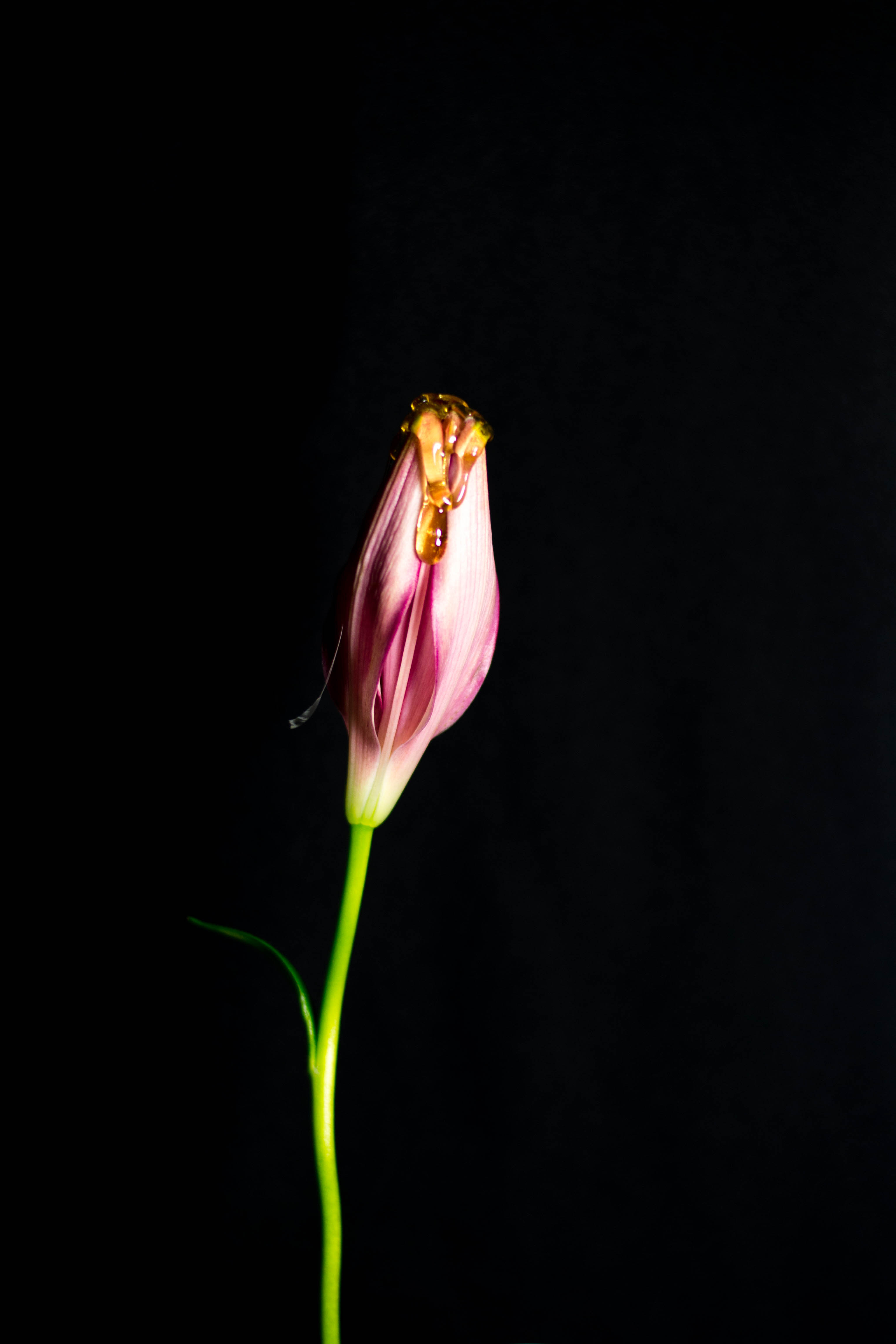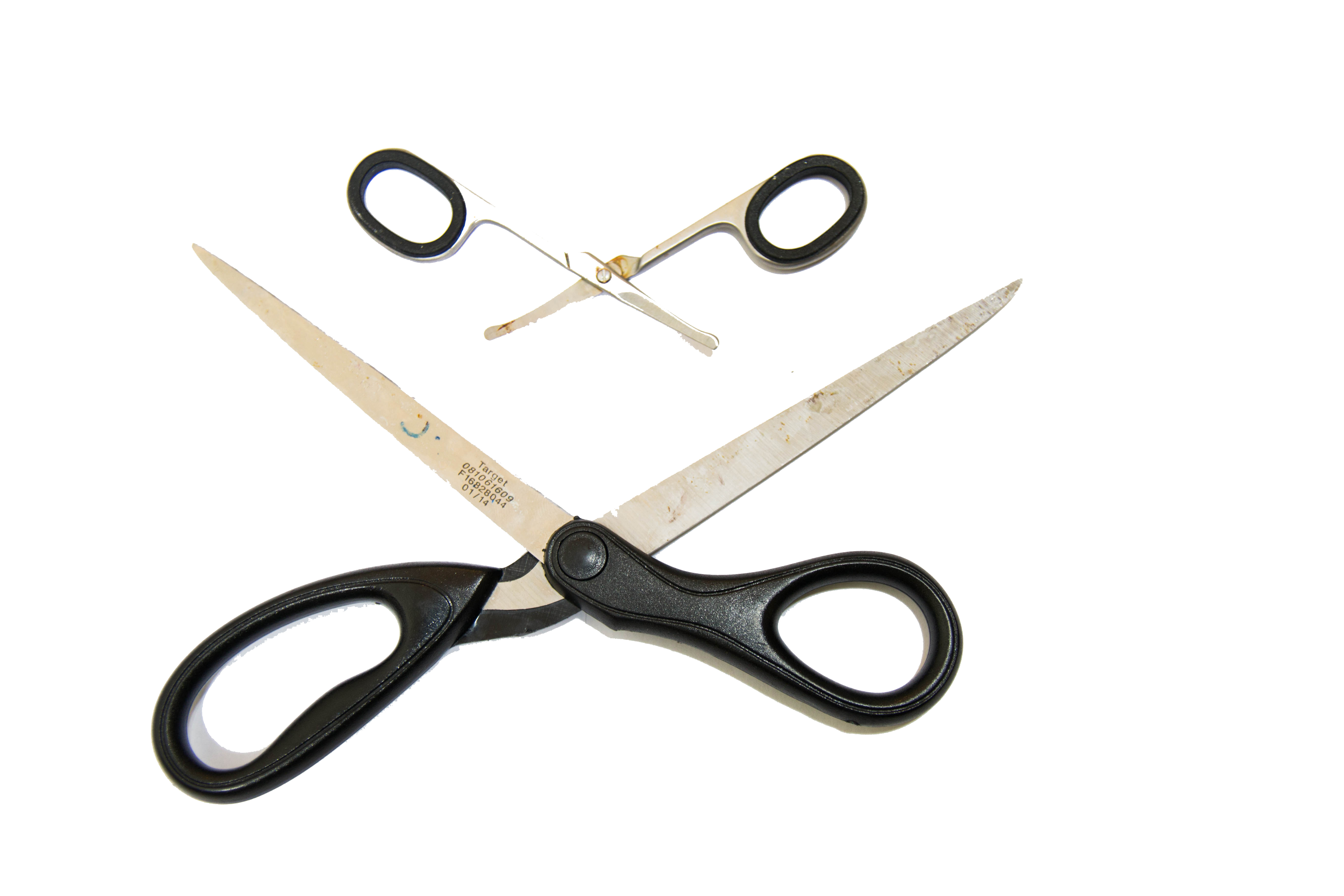It took McCormick junior Katie Perry a while to figure out whether she’d had sex.
Perry hadn’t forgotten the encounter; the details of her experience were clear. She was 18, and she’d had her first sexual experience with another woman. The question she was wrestling with was one most of her straight peers would never have had to ask themselves. She wasn’t sure if what had transpired “counted” as sex.
Perry, who is bisexual, had this uncertainty because there was no penis involved. Therefore, there was no classic “sexual intercourse” experience acted out, the kind defined in middle school sex ed as penis-in-vagina-to-completion. Since she was sleeping with another woman, there was no clear line, no action she could take that would leave her completely sure she had lost her virginity. She wondered what she would say if someone asked if she had. “Yes, but technically it was with a girl, so what is that? A half-virginity?” She looked it up on the internet and even asked her best friend if what happened “counted.” Her response: “I don’t think so, technically.” But that didn’t sit right with Perry, who knew the heteronormative definition was too limited. “You don’t have to have a guy to have sex,” she says.
Finally, she made a decision. “I’ll just say it counts, say I lost my virginity and move on,” she says.
In an era where mainstream acceptance of LGBTQ people is unprecedented, heteronormative ideas about sex and virginity remain dominant. This penis-entering-something cultural script overshadows conversations about sex; whether or not this definition of sex feels reductive, it’s fairly easy to imagine classic sex between men. That penetrative narrative infiltrates culture to the point that many queer women and nonbinary people with vaginas – basically, anyone having sex that typically doesn’t involve any penises – have no clear roadmap for what their sex even looks like. This poses a problem, because it’s nearly impossible to understand sexual orientation without the thing at its center: sex.

Growing up, Medill sophomore Katie Pach attended Catholic school in suburban Ohio, where she didn’t learn much about sex at all – let alone sex between women. She says she wouldn’t have known that gay people even existed without television and movies. “It just wasn’t something that existed, so it never occurred to me that I might like girls,” she says.
Once she started attending a public high school, Pach met new friends who expanded her worldview, often just by talking about sex. And once she saw and met girls who liked other girls, she began to think about her own sexuality. She’d often think “Wow, it’d be crazy if I was a lesbian! But I’m totally not, so it’s fine!” she says. But seeing that it was possible for girls to like other girls in turn made it possible for Pach to understand her feelings. Today, she identifies as bisexual, or often simply, “queer.”
While Pach’s straight peers had models for dating and sex on television and in movies, she didn’t. When straight friends complain to her about their lack of sex ed, Pach responds, “Yeah, but at least your sex is in every TV show. Every movie has a straight couple.”
In American heteronormative society, particularly in rural or suburban areas with a nonexistent or invisible LGBTQ population, people have relied on popular culture to understand and construct their identities. However, pop culture hasn’t always provided the most truthful or compassionate narrative. And while gay men have seen increased visibility from the late ‘90s onwards, beginning with shows like Will & Grace and continued in hits like Modern Family and Shameless, queer women’s representation – when it exists – has been particularly fraught.
Syd Shaw, a Medill sophomore who is bisexual and nonbinary, pointed out that much of the lesbian sex portrayed on television and in film is “for the male gaze.” In other words, it’s full of wide shots that pander to straight male desires by showing extreme, graphic sex and gratuitous shots of naked women’s bodies – meaning these movies give a warped message of queer female sexuality, instead of guidance, to their viewers.
“I feel like when you’re a queer woman, you can kind of tell when you watch these things, when they’re wearing fake nails and obviously catering to the male gaze, and when it’s realistic,” Shaw says. For the record, long, sharp, hard acrylic nails are not a common choice for women who plan to touch sensitive vulvas.
Olivia*, a gay Communication sophomore, agrees, citing the 2013 French film Blue Is the Warmest Colour as an example of lesbian sex filmed for men. “It’s those long shots focused on body parts that during actual sex you’re not focused on that much,” she explains. “It felt very much like, ‘Audience, look at them. They’re hot. They’re being hot together. Look at them.’” These messages can stick with their viewers. Take scissoring, for instance, an age-old frustration in lesbian circles. While some people attempt the practice, it’s fairly uncommon. However, its cultural presence is so strong many queer women feel they have to actually “have sex.” “Because of the male directed, ‘This is what lesbian sex looks like,’ I was kind of led to believe ‘This is something I have to try,’” Olivia says. It didn’t go well. “There was a lot of figuring out what were myths and what were jokes and what were actually things people did,” she says of her early sexual experiences.
The pervasiveness of scissoring in even the most lauded lesbian films, such as Blue and The Handmaiden, led to an essay by Shannon Keating, Buzzfeed’s LGBT editor, exploring this misconception. She concludes that “people don’t think what queer women do even counts as sex. To a lot of viewers it’s a meaningless college hookup, or a performance for horny guys, a phase or a mistake. One of the reasons why scissoring is still such a popular depiction of lesbian sex, even though most queer women don’t attempt it at all … is because scissoring looks ‘real’ to straight people.”
In other words, these films reinforce the idea that sex isn’t “real” unless it follows those dominant, straight cultural narratives. By reducing queer women’s sex to a spectacle for straight men, or worse, ending with the death of the queer women in question – a trope widely known across the internet as Bury Your Gays – these pieces of media question the validity of queer women, their love and their sex altogether.
That spills over to real life. Many women whose sexual experiences don’t fit the typical mold say they are constantly asked to explain or to justify how they have sex. Once, when Olivia’s Lyft driver hit on her, she told him she was gay so he’d leave her alone. Instead, he started pressing her for details on how she had sex. She’s also in Greek life, and although she says mixers have been less negative than she expected, she’s had to have intimate conversations about her sex life with curious boys. Likewise, Pach says friends have asked her about her sexual mechanics when they learn she’s queer.
“Being so out, some people take it as an invitation of ‘Oh, I have all these weird sex questions, let me just ask [Olivia]!’” Olivia says. Pach agrees. “My life is not on display for you. We’re not a spectacle,” she says. “I love that people want to get educated about stuff, but I’m also like, don’t ask me really personal questions!”

At least lesbians appear on screen, even if it’s in warped and fatalistic depictions. Many other women and designated female at birth (DFAB) people who locate themselves elsewhere on the LGBTQ spectrum, including transgender, asexual and nonbinary people, have almost no models their identities, what sex looks like and for what sex is supposed to mean.
It took Shaw years to realize that culturally dominant labels for sexuality and gender weren’t the only ones available. “I didn’t really know what transgender was … I didn’t know what bisexual was,” they say. “It took a long time before I realized there were these other options, these other terms that fit.”
For both Shaw and Perry, sex became charged, a test. People questioned whether either could be “sure” about their bisexuality until they had slept with both men and women.
“I think there’s a lot of pressure to categorize your experiences as ‘was this sex?,’ Shaw says. “‘To what degree was it sex?’ ‘Is this an experiment or is this who I am?”
For asexual people, it can be complicated as well. Kinsey Erickson, a Weinberg sophomore, is asexual. She doesn’t feel sexual attraction to other people, but she’s not “sex-repulsed,” and she isn’t a virgin.
She compares having sex to taking a walk on a slightly chilly day: “I know it’s good for me scientifically, and it’ll probably make someone happy if I go on a walk with them, but I’m also fine staying inside” – a very different attitude from what society says she should feel about sex.
Emily* is also asexual and “doesn’t care” about the gender of her partners. Navigating sexuality and sex on campus has been a struggle for her as well. She’s gotten to a point where she comfortably and casually hooks up with close friends, but sex carries no emotional weight or attachment for her, and intimacy is a different thing entirely. That’s something some sexual people can feel, but it’s compounded by Emily’s lack of sexual attraction not just to her partners, but to anyone.
The definition of sex based on penises and vaginas isn’t only a problem when two vaginas meet in bed. It’s a dominantly heterosexual narrative that excludes transgender people. For example, a transgender lesbian with a penis might have traditional penis-in-vagina sex, but the common story still doesn’t fit, says Lindsey Weiss, a nonbinary Communication sophomore. If that trans lesbian and her cisgender girlfriend have sex, that cis woman has “lost her virginity,” but only in the context of a script that calls her partner a man. The moral? “What looks and mechanically functions as heterosexual sex is not always that,” they say.
Although Weiss isn’t a woman, their experience as someone who presents “fairly femme” and was DFAB has a lot of overlap with queer women. For example, they’re part of the Rainbow Alliance splinter group QNU, a space for queer women and nonbinary people. That space, however, is mostly occupied by people attracted to other women. “I don’t feel excluded by not being attracted to women,” they say. “I don’t think that group is super preoccupied with discussions of sex, or even relationships, or even dating.” Instead, the group discusses the common, general experiences they share; sometimes that’s about queerness, but sometimes it’s just about mundane things like school, work or life. While sex is an important part of the queer experience, it isn’t the only thing queer people can connect over.

For many queer women, the representation they needed, along with connection and solidarity, came from the internet. Pach learned a lot about the actual mechanics of sex with women through YouTube personalities like Sex Nerd Sandra or Dr. Lindsey Doe’s channel “Sexplanations.” Likewise, Erickson and Emily didn’t know what to call themselves until they both first encountered the concept of asexuality on Tumblr in high school. They’d never known there was a possible label that fit how they felt.
But television and movies are starting to represent a wider range of identities. Netflix’s hit Orange Is the New Black was independently brought up by multiple women as a good example of a show with realistic woman-on-woman sexual encounters. In contrast to the “hot lesbians” of typical media, the sex scenes feel more natural – for example, leads Piper and Alex are shown having sex almost fully clothed in loose-fitting prison uniforms. “These two ladies are getting off together, with no one around, for each other,” Pach says. “Two women making each other feel good without pandering to whoever’s watching.” Additionally, the anthology series Black Mirror’s third season features an episode titled “San Junipero,” where two women flirt, have sex, fall in love and find a happy ending in a futuristic digital afterlife.
Even asexuality is getting representation outside of the “sociopathic or mentally disabled, doesn’t have a lot of friends, is super smart and has no romantic attachments and is therefore asexual” mold, Emily says. She points to BoJack Horseman’s Todd Chavez as the “golden light” of asexual representation. “He’s this stoner slob who lives on someone’s couch, he’s not that smart, and he has romantic interests,” she says, but the show confirms he’s asexual – helping challenge some stereotypes.

It is hard enough for queer people to understand themselves sexually, but acting on their sexuality can be even harder, particularly while trying to escape the male gaze and its influence. Although many queer women still join Rainbow Alliance and similar groups, a lot of women are just what Pach calls “casually queer.” They’re not involved in any LGBTQ groups and don’t often talk about it in public, but they’re out and open in their personal lives.
“You have to find them. Sometimes it’s easy, and sometimes it’s not,” Pach says. “Sometimes they look like stereotypical flannel-wearing, short hair, Birkenstocks lesbians, and sometimes it’s like ‘I had no idea that girl was gay!’”
Multiple women say they’re hesitant to try to find others who share their identities outside of visible LGBT groups like Rainbow Alliance, QNU or Transform. “All the people in Rainbow have all dated each other,” says Pach jokingly. Gay men run into a similar problem, but apps like Grindr make it much easier to find each other on campus. Equivalents for women like the app HER are far less popular.
For women and DFAB students coming to college uncertain of their sexuality, it can be hard to find someone willing to try out anything sexual with them. “Nobody wants to be your first girlfriend,” Pach says. It’s a common attitude, she explains, because of the possibility a girl you get attached to doesn’t actually like other women and was just “experimenting.” Additionally, a woman with no sexual experience with other women isn’t an ideal choice for a quick hookup after a party, especially if you have to “teach her how to have sex.”
There’s always Tinder, but Pach’s options dwindle when she sets hers to only women. “Okay, here we go, gotta go to like 100 miles to find five girls,” she jokes. Many of the women who do appear are just looking for a partner for a threesome with their boyfriend, another reinforcement of the idea that two women having sex on their own is somehow an invitation for male participation, or illegitimate on its own.
The dream, many of these women say, is a world where queer sex exists on the same plane as heterosexual sex, or just one where expectations and scripts around sexual activity are abolished. At the very least, better education about the many different kinds of sex a person can have, both in sex-ed settings and in popular media, is a major focus. Normalizing queer sex is a big step towards normalizing queer people and queer relationships.
Olivia wants people to know that although she’s gay, she’s not that different. “I think a lot of straight people get that the queer experience is different. I don’t think they get that it’s not alienating, in that it’s not that different from what they experience,” she says.
Many women wish, most of all, that straight people would stop and just listen to their queer friends. “Make fewer assumptions,” Emily says. And not just about strangers, but about friends as well. “Be aware of what your queer friends struggle with and have to deal with. Some things are just kind of strange to ask them!” Olivia says.
But the cultural emphasis placed on virginity can sometimes help people who aren’t having penetrative sex define their experiences. Weiss says that because it’s made into such a big deal, you get a certain feeling that helps you define for yourself when you’ve “lost your virginity.” “If you think you had sex, and it feels like you had sex, you had sex,” they say.
